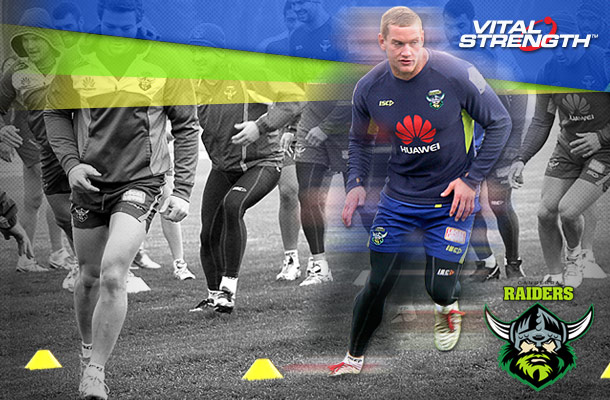
Speed and agility training is often neglected in rugby league training and this can have a negative impact on a player’s performance on the field.
Rugby league is a physically demanding game that requires players to be well trained in all areas of physical conditioning. Speed and agility training is a key component of a rugby league training programme. We asked for some expert advice on speed and agility training for rugby league from NRL Strength Coach for the Canberra Raiders, Leigh Woodbridge.
The Canberra Raiders do speed and agility training 2-3 times in the pre-season and then 1-2 times a week in season depending on the time between NRL games.
Leigh says, “It is very important to understand that in rugby league speed and agility training has to encompass both pre-planned and reactive drills.”
“By this, what I mean is that you need to train rugby league players in simple drills that require no decision making and just focus on pure acceleration, change of direction and top end speed while it is also imperative that you have drills that train the athlete in decision making and reactive agility.”
Before starting any speed and agility training session it is vitally important that rugby league players complete a comprehensive dynamic warm up which will prep the body for the session ahead. A typical warm up for speed and agility training could look like this:
- 40m easy jog (out 20m and return)
- 40m run (out 20m and return)
- Low skip for 10m jog 10m
- A skip for 10m / B skip for 10m
- Hamstring skip for 10m / glut skip for 10m
- Lateral shuffle for 20m (alternate sides after 10m)
- Karaoke run for 20m (alternate sides after 10m)
- Chicken run for 10m / Power skip for 10m
- Over the Hurdles for 10m / Walking lunge for 10m
- 123 reach drill for 10m / Kickers drill for 10m
- Shuttle Drill – 10m run to 10m return x 2
- 30m bounding run x 2
In between every 2nd drill the Canberra Raiders often perform a dynamic stretch or movement pattern to increase range of motion at specific joints.
Once you have completed your warm up you can split the session into 3 main parts for Speed and Agility training development.
- Low intensity teaching and technique work
- Power transfer and Acceleration development
- High Velocity Agility and reactive speed
“Notice how I haven’t included top end speed training into our session as I find that rugby league players will very rarely run at their max velocity and by training in this area you are increasing the risk of injury occurring.”
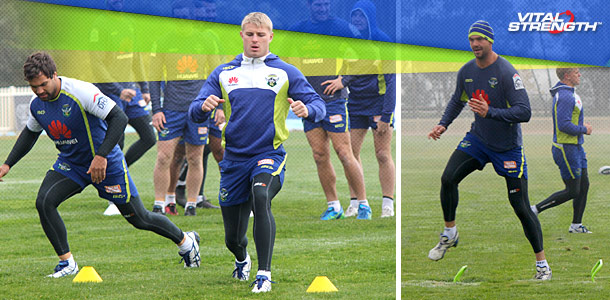
Leigh has found that over the years the most important factor for rugby league players is acceleration, change of direction and reactive speed not top end speed.
Throughout the speed and agility session players need to have a work to rest ratio of approximately 1:5 so that technique and quality is maintained.
Some specific speed and agility drills that Canberra Raiders players undertake are as follows:
Speed and Agility Training: Technique Work
- Wall Marching 3 sets of 12 (teaches forward lean, ground push and knee drive)
- Seated arm running – 3 sets of 12 ( teaches strong core and full arm swing)
- Harness marching both forwards and lateral – 3 x 20m (teaches body position, hip extension and knee drive)
Speed and Agility Training: Power Transfer
- Triple Lateral Hurdles over and back to 5m acceleration – 3 sets x 4 reps (teaches athletic position, outside foot push off, arm swing)
- Single leg starts over 5m, 3 sets x 4 each leg, (teaches forward lean, ground push and knee drive)
- Lean/Fall/Sprint over 10m x 3
Speed and Agility Training: Agility Training
- 5-0-5 drill (players start on 0m line in athletic position and react to coaches direction sprint 5m to line plant and sprint back to other 5m line, plant and return to finish) – 6 reps
- L Drill – players sprint 5m forward to pole # 1 cut to left for 5m complete a 180’ turn around pole # 2 return to pole # 1 cut left again and return to start – 5 reps
- Lead and chase drill – 2 players start 3m apart both facing the coach. On the coaches go and direction signal the players sprint 20m in that direction with one player trying to avoid being tagged by their partner. Walk back recovery completing 4 reps. Teaches athletic position, lateral push off and acceleration and creates competition between players.
These are only a few of many drills that rugby league players can perform while training for speed and agility. The keys points are that players must have a good warm up, start with technique work and build into the session, they must make sure that they have a 1:5 work to rest ratio so that they can maintain intensity and quality as the session progresses. Speed and Agility training requires athletes to be focused and fully committed to the session. Coaches need to emphasise quality not quantity in speed and agility training sessions and be patient with their athletes as improvements are often slower than when training other elements. For athletes to have maximal gains from their speed and agility training they need to have a quality strength and power program which will complement their on-field work.
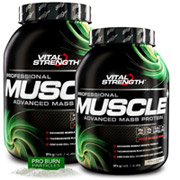 After an intense training session Canberra Raiders players consume Vitalstrength Whey Low Carb Protein or Vitalstrength Pro-Muscle Advanced Protein (depending on their body composition goals) along with Vitalstrength L-Glutamine and BCAAs to help repair and grow muscle.
After an intense training session Canberra Raiders players consume Vitalstrength Whey Low Carb Protein or Vitalstrength Pro-Muscle Advanced Protein (depending on their body composition goals) along with Vitalstrength L-Glutamine and BCAAs to help repair and grow muscle.



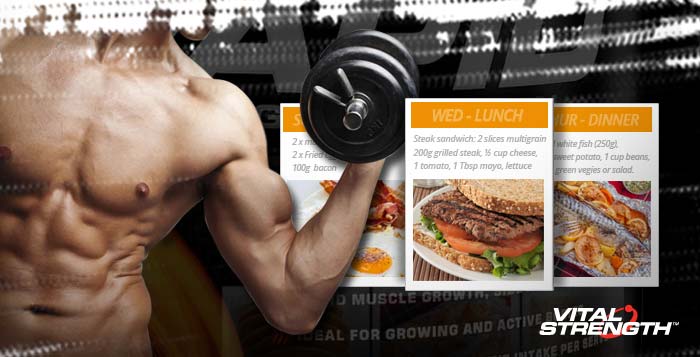


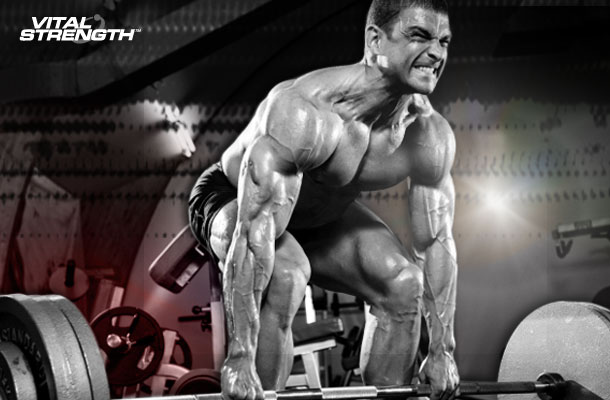


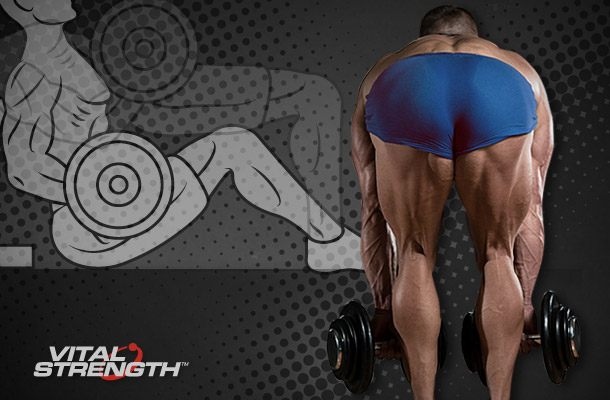






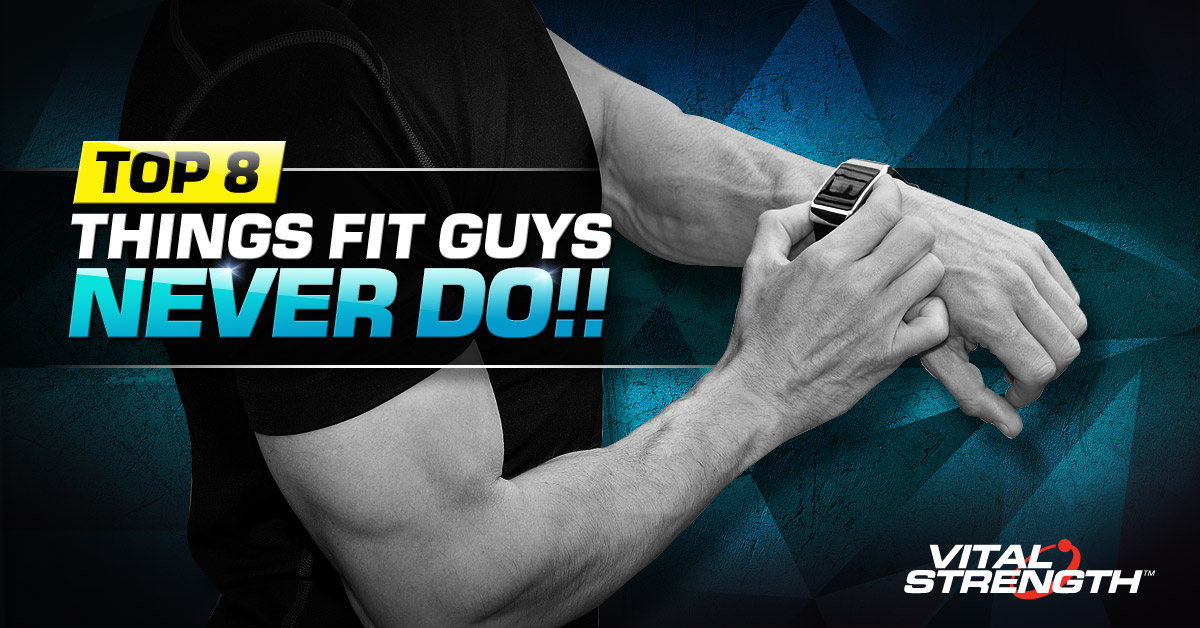






 Information will not be shared with third-parties
Information will not be shared with third-parties